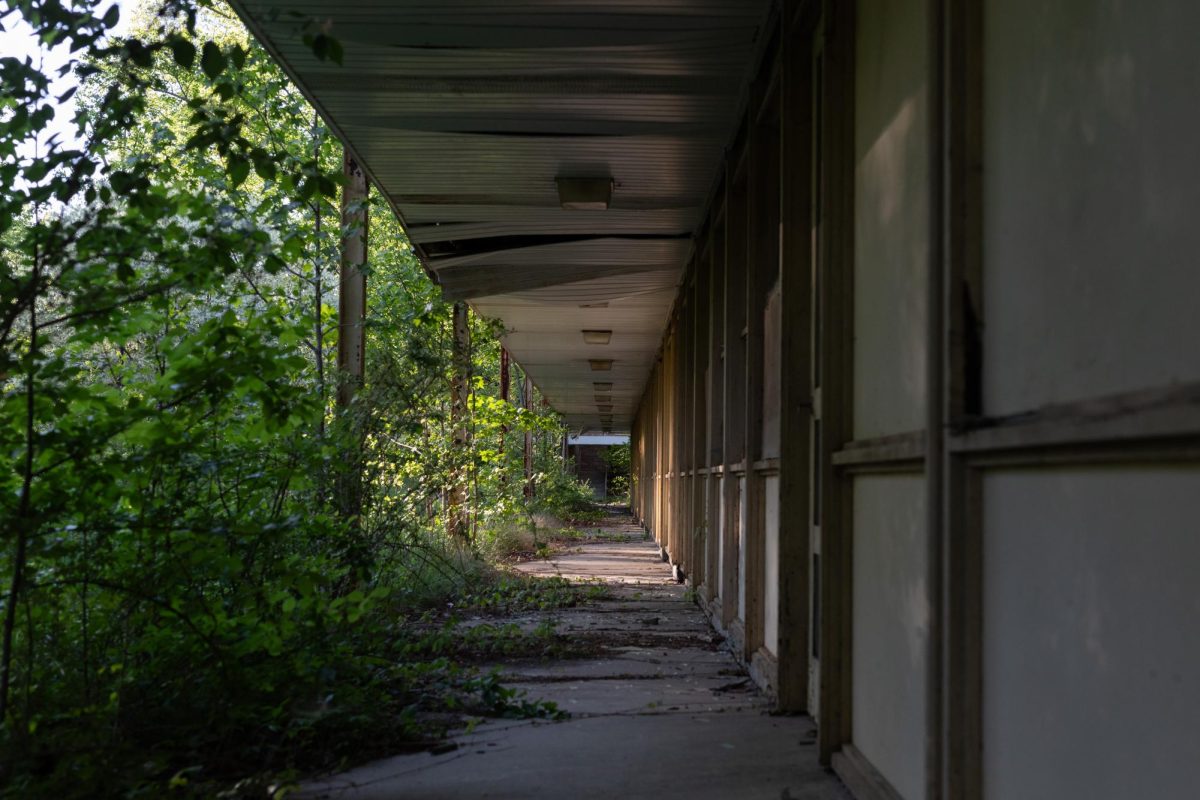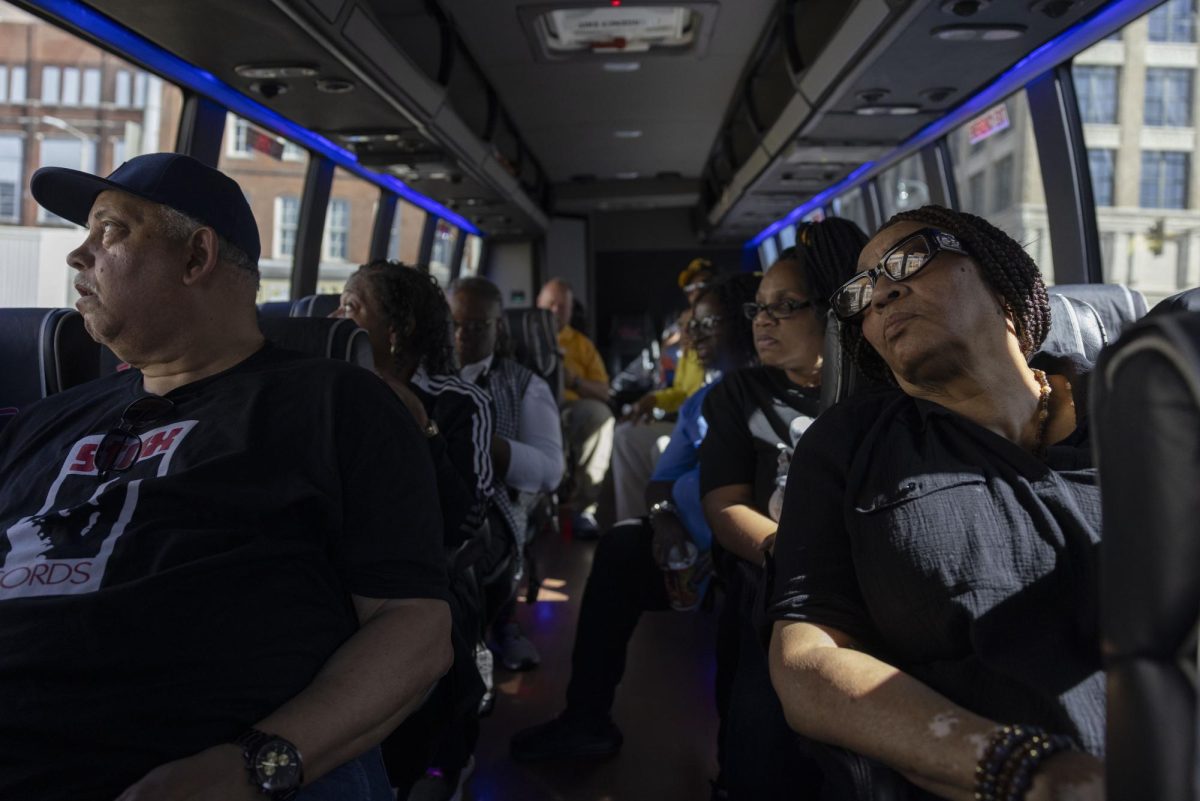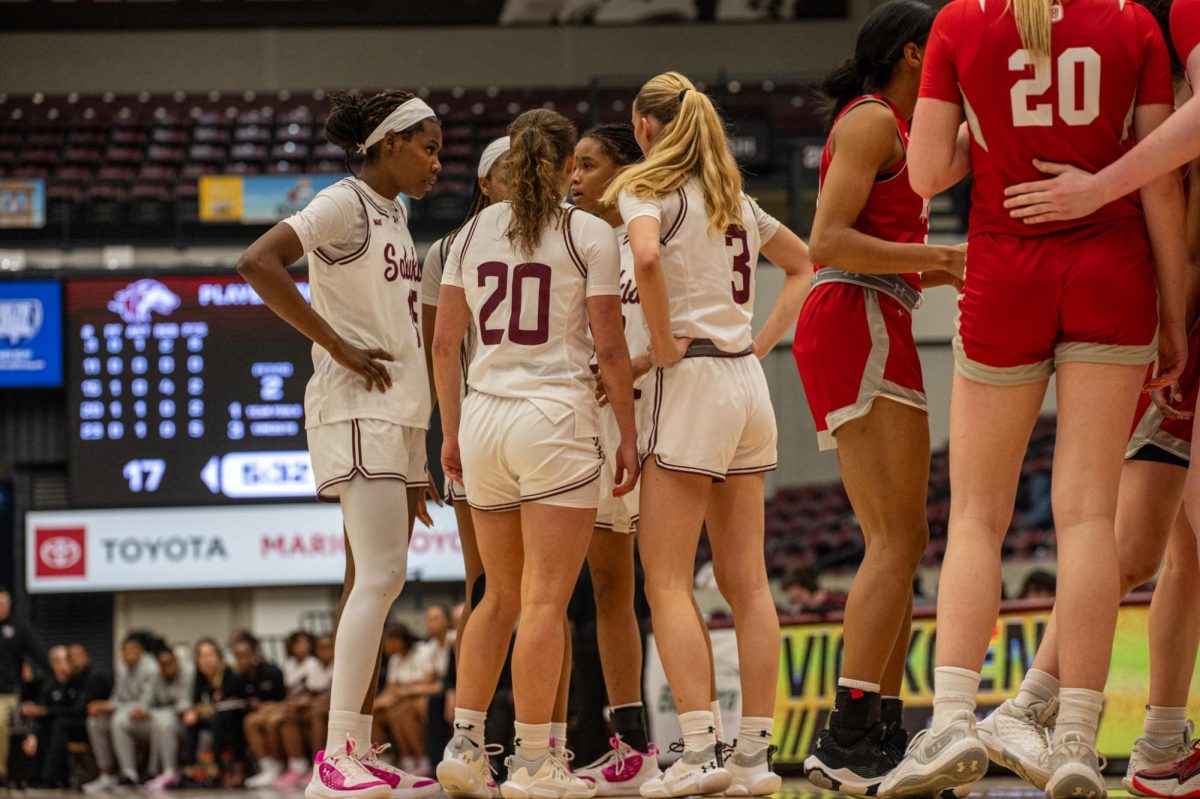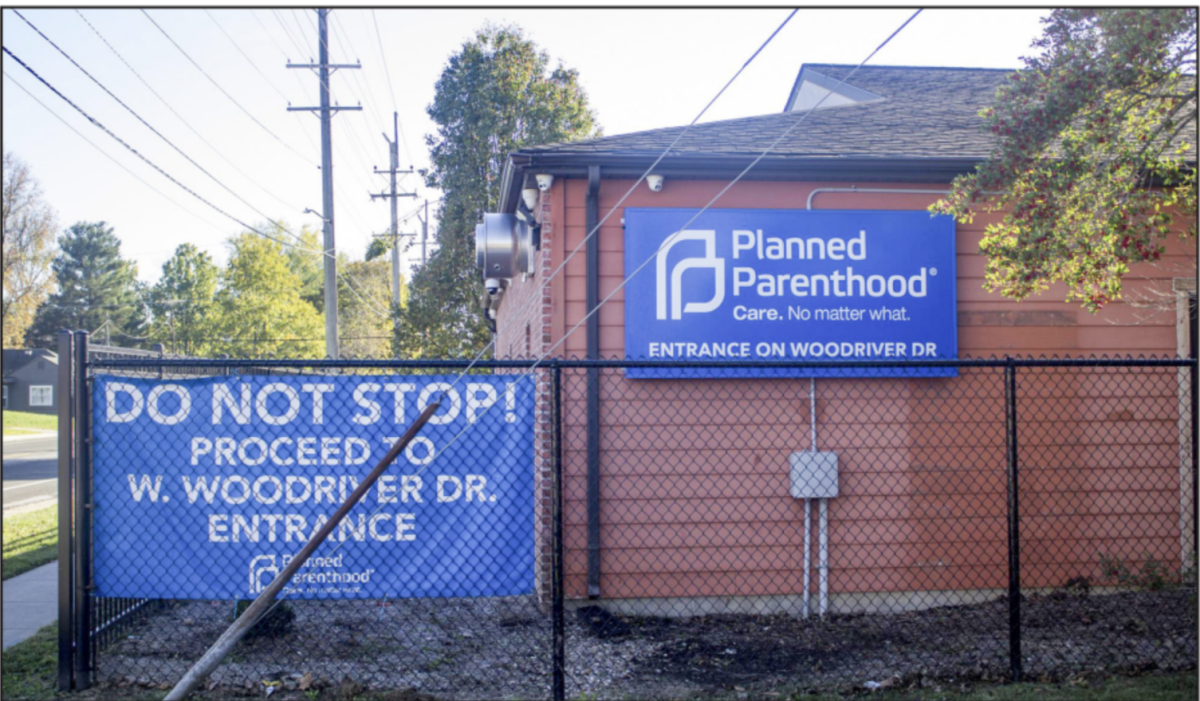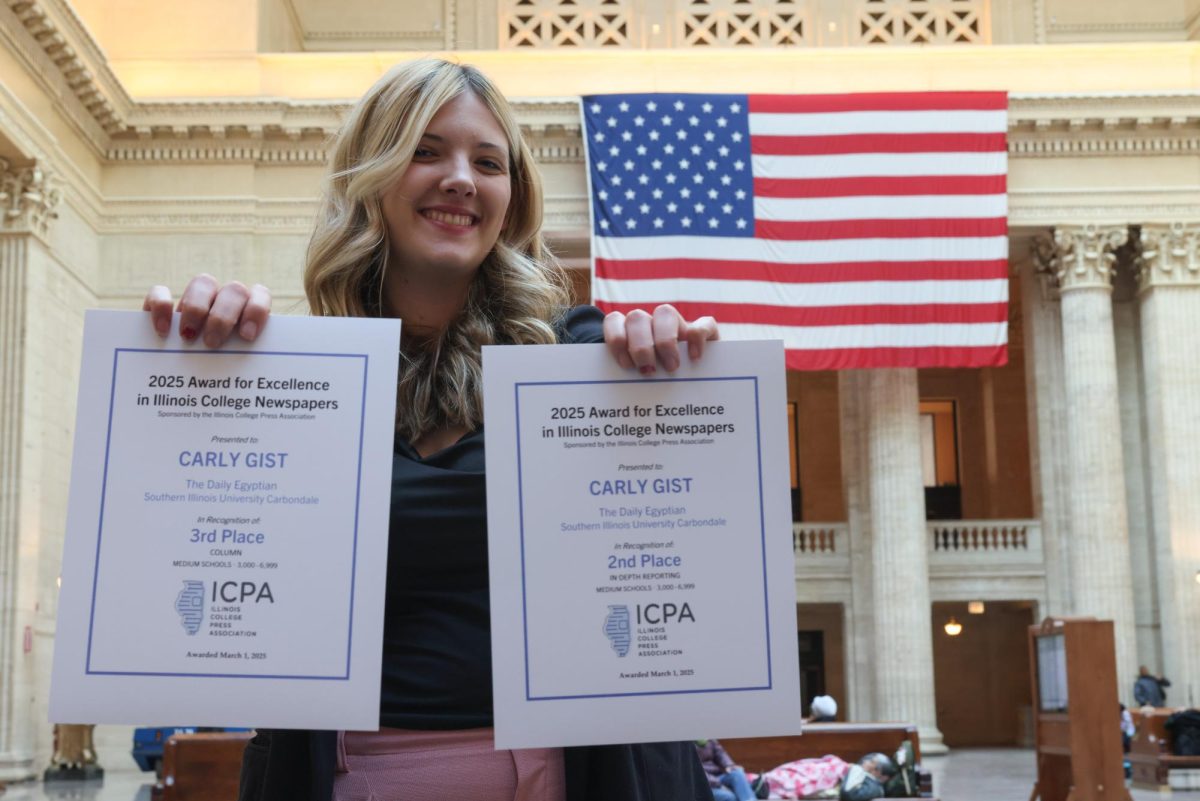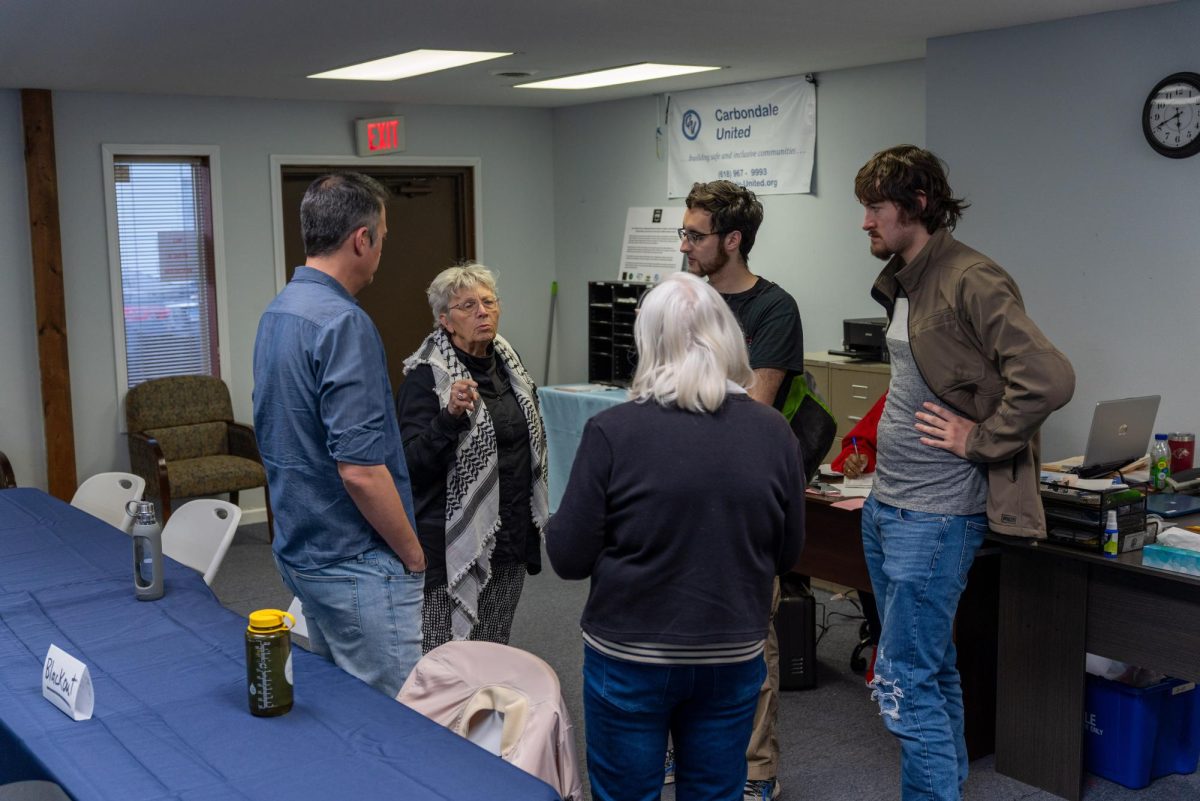Smashed glass, boarded-up windows and overgrown paths sit just off campus buried back in the trees. Eleven years ago marked the first announcement of the demolition of Southern Hills. Now, the old graduate housing complex is run down and a community hazard that keeps getting moved down the university’s demolition to-do list.
Southern Hills, a nearly 70-year-old set of campus housing, still stands as a shell of its former life of housing over two hundred students. The complex sits off of South Wall Street and functioned from 1960 up until its demolition announcement in 2012. At the time of the announcement, most of the buildings had been cleared out and closed other than a final few.
Advertisement
The housing outgrew its use and was moved to the campus demolition list in 2012 after students were fully moved out. Facility and Energy Management begins the long process of demolition early on as buildings get to their ‘end of life’ status.
“So we have several buildings on the demolition list that are not torn down yet,” Director of Facility and Energy Management Mark Owens said. “There’s quite a process to go through to demolish a state building.”
The criteria on deciding what buildings make the campus demolition list are factored in on cost, state laws and more.
Advertisement*
“When the cost to get that building up to date and safe with life safety exceeds the cost of what it is to either utilize a different facility or the cost to build new and so to bring that up and have it safe for students to live in that cost gets too high to where we just have to move that operation somewhere else,” Owens said. “So a building goes on the demolition list if you decide okay, this building’s not worth this investment, it’s better to take that money and spend it over here and move this operation over here.”
Facility and Energy Management work through the campus ‘Master Plan’ as a deciding factor on buildings and their functions. The Master Plan is run by a committee and makes the deciding factors on the school’s buildings and their functions. The last plan was curated in 2000 and is still being operated with.
“So I think a lot of these buildings that are on this demolition list [are] kind of waiting for prioritization of how to use our funding to start that process and that will be guided by the master plan,” Owens said. “It’s definitely going to be a big part of that plan is, you know, that demolition list and where do we get started? Where’s the most important place for the campus?”
The housing no longer is viable to hold residents but is still being utilized despite the impending demolition down the road. Some of the complex buildings are used as storage for the university’s crafts such as plumbing, electrical and more.
“So some of them have some equipment stored in and some of them and some of them have shops where they kind of, you know, stage equipment,” Owens said. “So if they get a call out, you know, though they’ve got their equipment close on site that they can grab and go out.”
The rundown space not only is an eyesore, but also serves a notable hazard to the campus community. With the possibility of hazards to physical health and financial issues, abandoned buildings can host numerous problems just by their existence.
According to the Center for Community Progress “Failure to address problem properties just like ignoring a leaking faucet, costs more in the long run and causes more harm over time.”
Living in or near vacant, abandoned and deteriorated (VAD) properties can cause residents to be exposed to harmful toxins such as mold, lead and other dangers. This in turn increases the risk for diseases and health risks. According to Erwin de Leon of Columbia University and Joseph Schilling of Urban Institute, living in the vicinity of VAD properties can cause higher rates of chronic illness and promote violence.
The harm of VAD properties pushes well past the physical aspect and steps into financial strain on communities. The Center for Community Progress states that homeowners often are charged higher in their insurance for living in close quarters to an abandoned home. In Cleveland, Ohio, homeowners found that their property loses 9.4 percent of its value if it is within 500 feet of a vacant and abandoned building.
Not only do they present financial and physical problems, abandoned buildings attract the curiosity of younger generations all throughout the community. The complex resides near the campus and Carbondale schools.
“So when you grow up in a place like this, it’s not very big,” SIU Student James Baltz said. “Like there’s areas that just sort of stick out to you. You know you hear about it over time. You eventually wander into all the nooks and crannies of the town.”
The Carbondale native spent his early years growing up curious on what the buildings were and why they were such a mystery.
“It was abandoned, there were never really cars going back there, it was overgrown but it was still kept up, in a way it was weird because you would see trucks driving in and out,” Baltz said. “But I mean really, the short answer is it was just mysterious.”
The housing sits just off a main entrance to Carbondale and despite how far back it sits in the trees on a narrow road, it sticks out like a sore thumb to those passing by on a routine drive or even eerily greets first-time visitors on their drive to the college town.
“I mean, it’s literally it just looks like a motel sort of,” Baltz said. “So you go up the stairs and the doors are locked, but on the inside, there was a few that were open and like the windows were busted, but on the inside. It was like being used as storage for old desks and tables and chairs like each room. I’m sure there were some empty rooms, but from what I can remember each room was just full of stuff.”
While he visited in the day to take photos as a hobby, Baltz found himself and his friends exploring the complex at night to amplify the experience. On a New Years Eve evening in 2020, the then 18-year-old was asked to leave by workers on the property.
“There’s a guy in a white truck and I mean the truck was stamped, so it wasn’t like you know, some rando,” Baltz said. “But it was a white truck and it said Southern Illinois University on the side and I remember we were up in the second floor. I was taking pictures and looking in and he just drove by and he was like, ‘Hey, you’re not allowed to be back here and you need to leave.’”
Despite the curiosity, Baltz weighed in on the potential issues of the complex remaining upright nearly a decade later and the risk of nearby school kids gaining the same curiosity.
“There’s jagged edges from the railings rusting off and the glass being broken,” Baltz said. “And I guarantee you that there’s high school kids going in and out there all the time… I’m sure if I had kids. I would want it torn down just to eliminate the risk of them potentially sneaking out and going in there. So honestly, with everything into consideration, it probably should be torn down.”
While younger generations view it as a fascinating evening activity, the older generations remember the complex and what it used to be.
“Southern Hills was our “first” home,” Saluki alum Ed Didrickson said in the comments of a past Daily Egyptian article on the complex. “Moved in 3 days after marriage in 1965. Had a king-sized bed that you could only get into front the foot end since it was as wide as the bedroom. Loved our neighbors. Was a great place to start a life together.”
The complex will live to see more seasons until the university circles back to the words “Southern Hills” on its Master Plan and decides it’s time to see through on their promise of knocking the now storage units to the ground.
Advertisement



